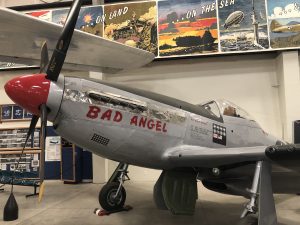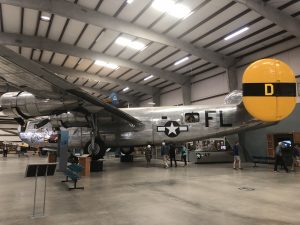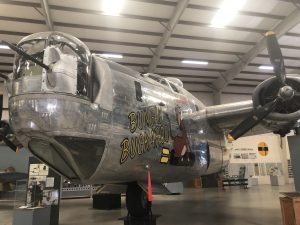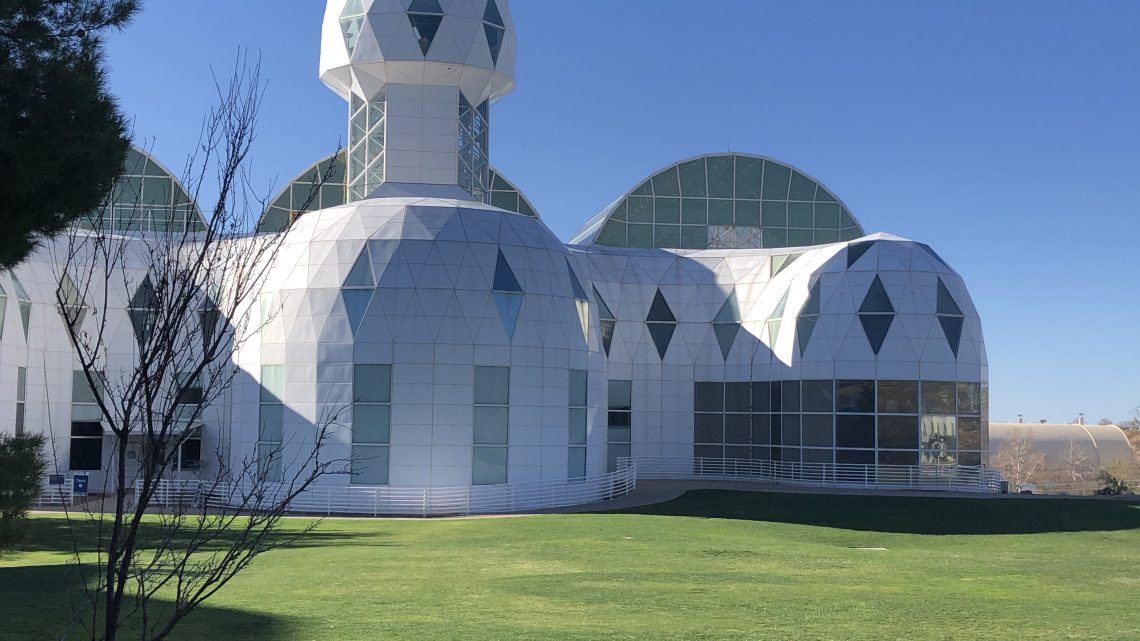Here we are, still in Benson, Arizona, yearning for more travel, yet needing to build up our bank accounts. Soon enough, we’ll be on our way again. In the meantime, we’ve had the chance to get work done on our coach, which as it turns out, was badly needed. We spent four days at La Mesa RV in Tucson, sleeping in their parking lot by night and hanging out in their customer service area by day. With new brakes, a rebuilt front end, and adjusted and replaced parts on the levelers, we’re ready to go.
It wasn’t all bad. We met some wonderfully kind people and took the time to visit interesting places. I’ll start with the Pima Air & Space Museum, one of the largest non-government funded aviation and space museums in the world. It contains six hangars full of planes from every era of our space-going history, along with some from around the world.
When commanders at the nearby Davis-Monthan Air Force Base recognized that much of the aviation history of our country was rapidly disappearing into smelters, they decided to preserve this heritage by placing them along the fence line at the base. The public responded with enthusiasm, but viewing them through the fence was rather unsatisfying. In 1966, Tucson Air Museum Foundation of Pima was founded, and they happily received the aircraft already collected into their new museum site. It wasn’t until 1976, however, during the country’s bicentennial, that the museum was opened to the public.
With a minor interest in aviation, Thom especially enjoyed the display of the nearly 300 aircraft spread out over 80 acres. His personal favorite was the P-51 Mustang, constructed from original parts of various Mustangs and newly-manufactured parts made by the museum’s restoration staff and volunteers.
My favorite activity was our visit to Biosphere 2, a facility in Oracle, Arizona, run by the University of Arizona. There, eight individuals were sealed inside the Biosphere for two years during the early 90s to study survivability. They wanted to find out if humans were capable of building and living in self-sustaining colonies in outer space. Made up of three main sections, this structure has an above-ground glass, enclosed area (air-tight), a below-ground technology area, and an area designed as a human habitat. The glass-enclosed area contains five ecosystems—coastal fog and tropical rainforest, savanna grassland, mangrove wetland, and ocean with coral reef.
They grew all their own food, meaning they, by necessity, ate mostly vegetarian or vegan during their two years sealed inside. They did have pigs to clean up food waste and once in awhile would have bacon or fish. I asked our tour guide if they noticed any positive results from their diet and she said they lost weight and reaped healthy results on the inside.
I was especially interested in the way they handled human waste through a system that employs both aerobic and anaerobic microorganisms and other biological recycling systems, including algal scrubbers in the ocean and a soil-bed reactor, which pumps air through the soil for metabolilc breakdown. Why don’t we have more of this technology in our homes?
The Biospherians, as they were called, didn’t achieve everything they intended since they encountered difficulties with oxygen levels, precipitating the need to pump in oxygen. And because it was an El Nino year with more cloud cover than usual, they didn’t reach maximal food production.
There’s so much more that could be said, but I don’t have enough space, so I’ll just suggest a couple of books you can read on the subject: Life Under Glass: Inside Story of Biosphere 2 by Mark Nelson (and others); and Biosphere 2: The Human Experiment by John L. Allen.













